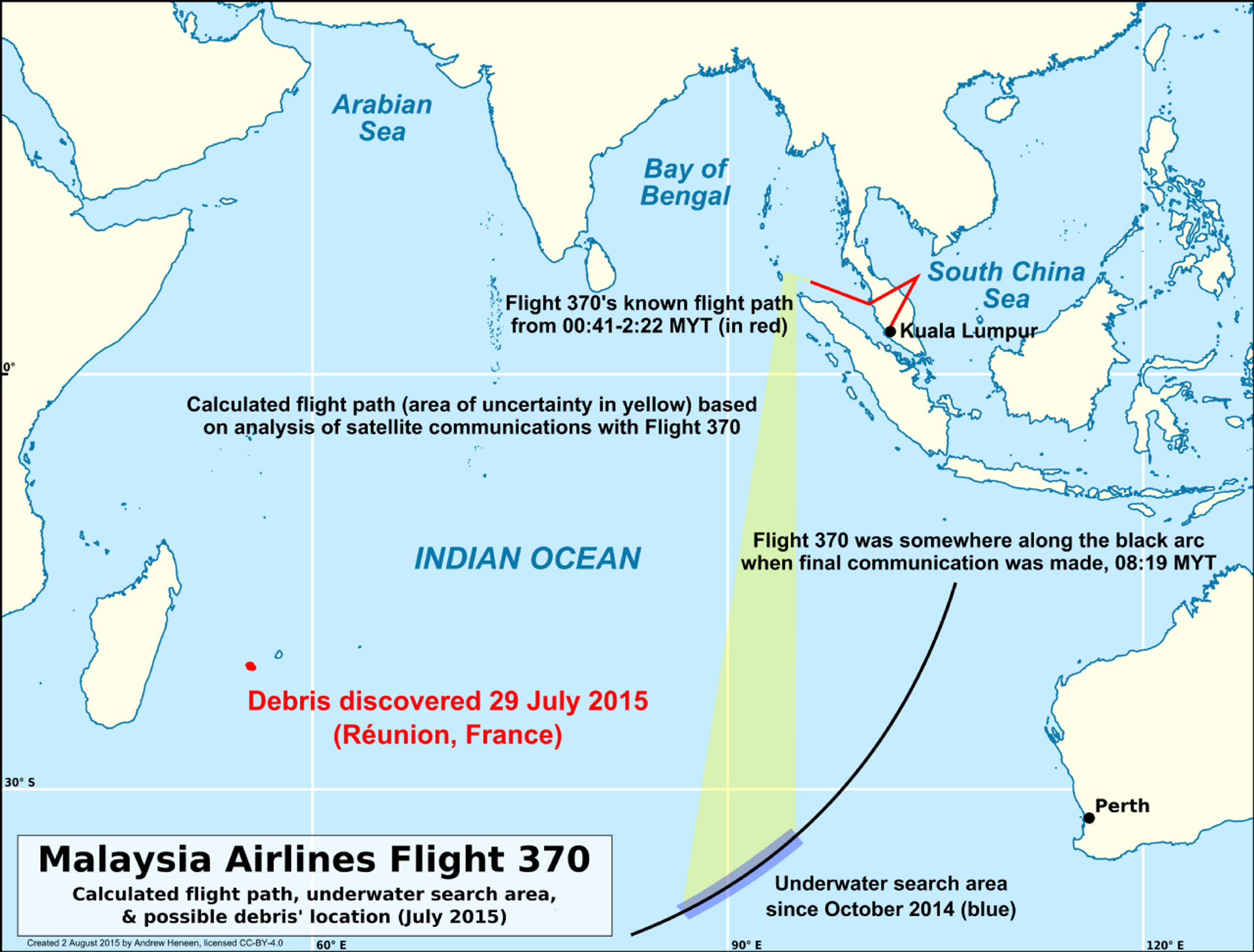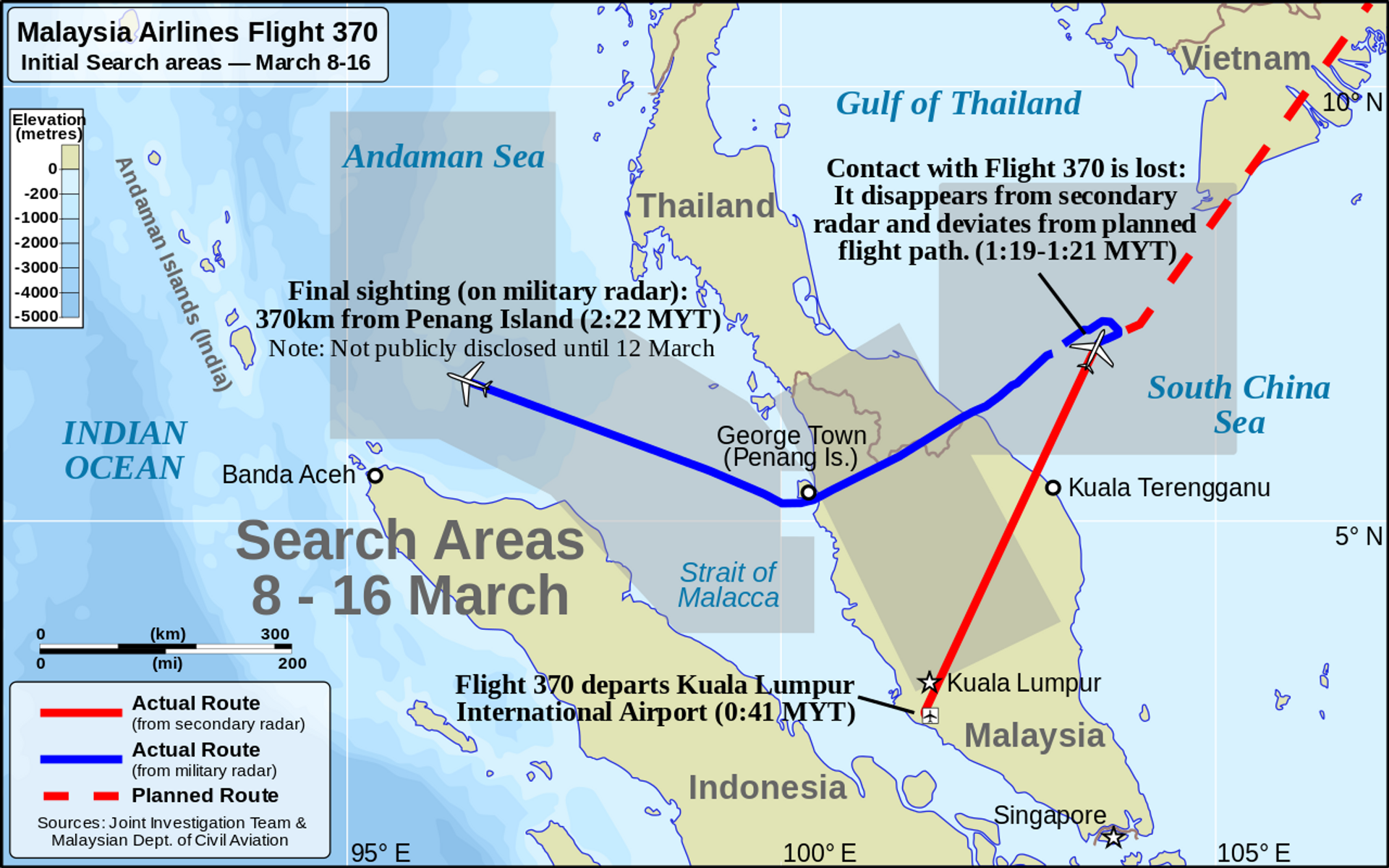Malaysia Airlines flight MH370 ventured into the southern part of the Indian Ocean in its final hours, aviation expert Richard Godfrey suggested in a recent report using the data he obtained from a new method of tracking the plane that had gone missing on 8 March 2014. Godfrey relied in his research on the logs of the Weak Signal Propagation (WSPR) – a global network of radio enthusiasts, who send short low-power transmissions on medium and high-frequency bands to test propagation paths.
These transmissions can get affected and distorted by obstacles, such as planes crossing their propagation paths. So by studying the WSPR (also dubbed "whisper") transmissions from the area surrounding the spot where MH370 disappeared from the radars, and anomalies in them, a person can deduct the missing Boeing's further path, Godfrey explained.
"WSPR is like a bunch of tripwires or laser beams, but they work in every direction over the horizon to the other side of the globe […] Any Over-The-Horizon-Radar is similar to WSPR, it also uses HF radio waves that bounce off the ionosphere and is effectively a very sophisticated tripwire detection system," the aviation expert said.
Singling out the distortions for a specific plane is a tricky thing, which is essentially about "a lot of needles, in a lot of haystacks" according to Godfrey – one has to study the documented flight paths and travel time frames of all the planes crossing the WSPR's "tripwire" signals and compare the data with the anomalies in the WSPR readings. When all documented flights are excluded, only distortions caused by the missing plane that went off the grid will remain.
Godfrey is still working on singling out moments, where MH370 crossed WSPR signals in the airspace above Malaysia and Indonesia. However, the area where MH370 went after disappearing from the radars, is relatively air traffic-free and so the aviation expert had little trouble finding eight WSPR "tripwires", which the place crossed. The plane's purported flightpath, which Godfrey drew by connecting the spots, where MH370 purportedly crossed radio enthusiasts' airwaves, suggests that the doomed Boeing 777-200ER disappeared somewhere in the southern part of the Indian Ocean.

The indication that MH370 crashed in this part of the Ocean is not new – the area became a primary search site after authorities analysed data from the Inmarsat satellite with which the missing Boeing's automated systems continued to communicate even after the plane's pilot switched off other means of communications and tracking and went off the radar grids. Godfrey says that his findings simply strongly support the notion that the remains of MH370 lay at the bottom of the ocean somewhere in that region.
However, several years of searches in the southern waters of the Indian Oceans bore no fruit, the only piece of MH370 found is a piece of flaperon on the shores of Reunion island, west of the search area. Eventually, Malaysian authorities called off the search, while failing to determine the cause that forced the pilot to turn the plane. This, in turn, sparked numerous conspiracy theories about the plane's fate and even prompted at least one MH370 enthusiast-financed expedition, which failed to locate the Boeing's debris.





